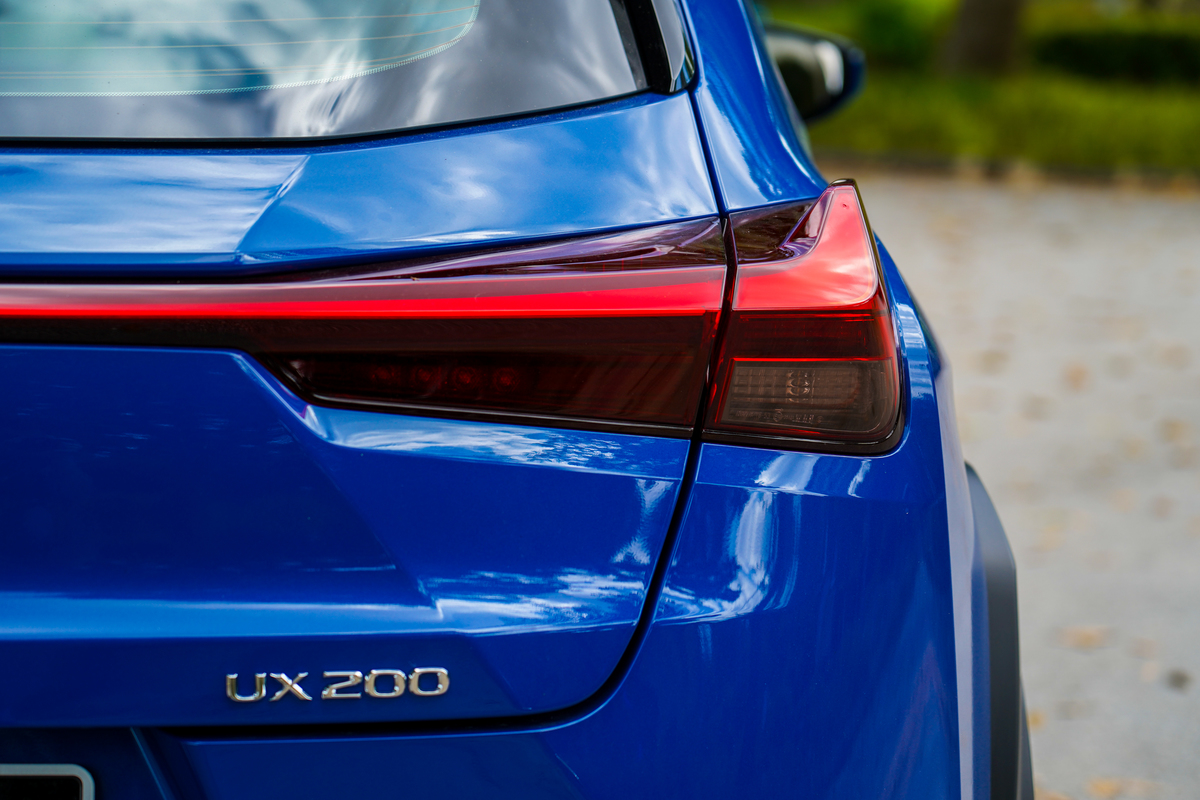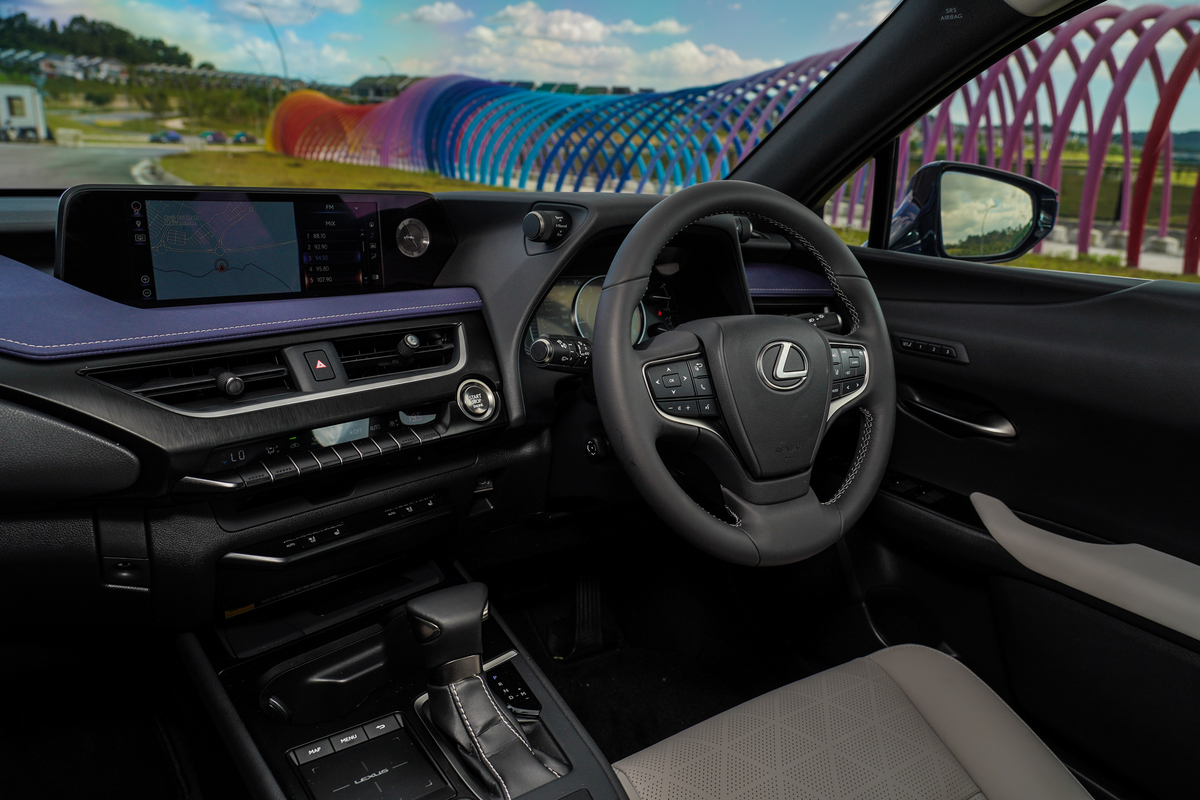[AD] FIVE ways the Lexus UX can change the way purists perceive compact SUVs [UPDATED]
Self-proclaimed motoring romantics often rue the way things have panned out for the automotive industry, with an exceptional amount of criticism levelled at arguably the most popular genre of cars in recent year: the compact crossover. In truth, many premium makes have produced quite desirable cars using this money-making formula so much so that having the money to shop in this segment isn’t necessarily a blessing given the quantity of choices that come with it.
Lexus Malaysia recently added to the compact crossover conundrum when it launched the all-new UX here in three strategically-differentiated variants: the UX 200 Urban (RM235,472), UX 200 Luxury (RM274,027) and UX 200 F Sport (RM289,364). And while it faces an army of posh and proven rivals on its arrival, the unique way in which Lexus has designed and engineered the compact SUV in its line-up suggests it may find more success in convincing the hard-to-please enthusiasts to go with the flow of popular opinion.
Here are five reasons why the Lexus UX might just change the way purists typically perceive compact SUVs...
1. No turbo, no problem

While most rivals offer exclusively turbocharged engines in this segment, Lexus breaks the mould by complementing its force-inducted offerings with a variety of naturally-aspirated power plants such as the new 2.0-liter four-cylinder mill powering the UX 200. With 169bhp and 205Nm of torque at its disposal, the M20A-FKS engine delivers respectable levels of urban performance while allowing purists and traditionalists to experience the sensation of driving a fuss-free non-turbocharged vehicle just like the good old days, in a distinctly modern and competitively-priced package.
The UX 200’s century sprint of 9.2 seconds may not be class-leading figure by current standards, but outright performance is not necessarily a priority in a car that rides as comfortably and confidently as the UX does in true Lexus fashion. If anything, its tried-and-tested engine architecture bumps up assurances of a smoother ownership experienced paired with surprisingly good fuel economy for a nat-asp setup. 6.2 litres per 100km (16.1km per litre) on paper will easily take the fight to trimmer four-pot turbos, and it’s largely thanks to point number two.
2. Old school doesn't mean low-tech

While normal aspiration may sound outdated to some, Lexus cleverly combines this time-tested concept with cutting-edge features such as ultra-lightweight pistons with multi-hole direct injectors, a continuously variable capacity oil pump, variable cooling system and variable valve timing with an electric motor at the intake (VVT-iE) to further innovate an engine many have assumed to be stretched to its limits.
Another serendipitous case of old-meets-new is the Direct Shift CVT (countinously-variable-transmission) driving the UX 200. A first-of-its-kind innovation pioneered by Lexus, the transmission has 10 virtual ratios, including an actual mechanical gearset to get the car off the line from a standstill before letting the CVT’s pulley system take over to keep the car going efficiently. The powertrain’s three drive modes – Normal Eco and Sport – complement the dynamic flexibility of the GA-C (Global Architecture Compact) platform underpinning the Lexus UX, which is best characterized with the Adaptive Variable Suspension (AVS) fitted exclusively to the F Sport variant. This endows the compact crossover with more precise handling performance, as the sporty driving sensation is capped off by the F Sport’s signature moving instrument cluster first seen in the legendary Lexus LFA.
3. It represents Japanese Zen-like craftsmanship at its best

From the offset, the fluid lines and surfaces of the Lexus UX sculpted by Japan’s famed Takumi craftsmen evident in the UX’s aero-stabilising blade lights and wheel arch mouldings form a visually tranquil reminder that luxury need not be high-performance. It’s a far cry from premium cars that attempt to woo buyers with biggest wheels and the most aggressive diffusers; Lexus’s approach rekindles the forgotten art of a car made luxurious by the state of comfort and relaxation it lulls its passengers into, relieving them of the burdens that often make daily commutes in less occupants-attentive vehicles feel unpleasant.
The Engawa design concept fluidly blends exterior and interior design for visual harmony from all angles of the Lexus UX. Its cabin sets a minimalistic yet upmarket tone in Luxury format, with the use of exquisite trim materials such as the washi paper finish inspired by Shoji doors of traditional Japanese households and leather upholstery finished with Sashiko quilting; a technique derived from traditional Japanese martial arts apparel made to be durable yet visually intricate. Lexus employs the LC 500’s ‘Seat-in-Control’ driver position concept within this Zen-like environment to minimize distraction while enhancing focus in the driver’s seat.
This ease-of-use theme is also evident in convenient features like the hands-free automated tailgate, wireless charger and panoramic view monitor for effortless parking. Automation of boring chores is an integral part of luxury after all.
4. The cabin is also a mobile entertainment hub
The interior of the UX isn’t just pretty to look at and relaxing to be in. There’s quite a treat in story for the senses as well. UX 200 Luxury and F Sport models boast eight speakers with bamboo charcoal for natural-sounding audio on the move. This audio system can be maximised by using the Apple CarPlay and Android Auto that’s standard in all UX models, but shocking not in all cars costing north of the RM200k mark.
Smartphone connectivity also gives drivers a more familiar interface to communicate with while driving. But if you prefer to experience the car’s native UI, the latest iteration of the Lexus Remote Touch Interface (RTI) has been enhanced such that its haptic feedback now closely mimics the sensation of using a touchscreen device. The construction of the RTI itself is now frameless without any sharp edges and there’s even a special coating on the touchpad to allow fingers to slide more fluidly. There may be a steeper learning curve to operating this system if you’re coming from another make of car, but the unique layout makes for an interesting talking point nonetheless.
5. LSS+ is the acronym that will keep your family safe and sound

Safety is paramount in all new cars. This message is strong in cars endowed with a wealth of potentially life-saving features that do not cost a single cent more than RM50,000 on-the-road. While the disparity in safety features between cars of varying price brackets has tightened to the benefit of every individual on Malaysian roads, Lexus stays at the forefront with its Lexus Safety System+ (LSS+) suite of semi-autonomous driver aids including Pre-Collision System (PCS), Dynamic Radar Cruise Control (DRCC) with Stop & Go function, Lane Tracing Assists (LTA) and Adaptive High-Beam System (AHS).
These technologies work in tandem with the UX 200’s Blind Spot Monitor (BSM) and Rear Cross Traffic Alert (RCTA) to virtually eliminate the probability of life-threatening accidents, which is exactly the kind of security you’d want in a dependable family runabout. The Lexus UX is also equipped with eight SRS airbags, ISOFIX child seat anchors and a head-up display that encourages a safer field of vision for the driver. This wealth of safety features provides an extra layer of peace of mind for protective owners who may find themselves needing to let a friend or family member take the wheel instead. Less worrying makes it a whole lot easier to enjoy all of the qualities that make the UX a uniquely desirable premium crossover at the end of the day.
Experience the all-new Lexus UX 200 at any Lexus centres. To learn more about the new Lexus UX 200 visit Lexus website here.
UPDATE - 15 JUNE 2020
In light of the government recent economic recovery initiative that brought forth a revised Sales & Services Tax (SST) scheme, the prices stated in this post have been updated to reflect said revision.




















